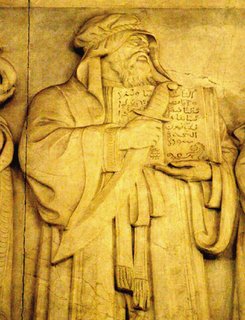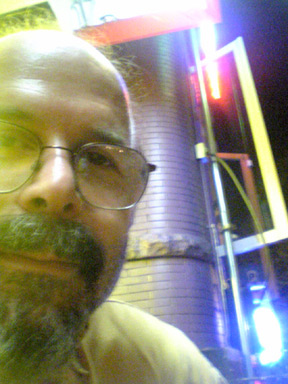When the mountain came to Mohammed [intellectual cartoon]
 Stumbled on this example of the incomparable dry humorist Gary Larson's work, amid a perusal of the Wikipedia essay regarding Depictions of Muhammed.
Stumbled on this example of the incomparable dry humorist Gary Larson's work, amid a perusal of the Wikipedia essay regarding Depictions of Muhammed.And (to give more of my websurfology to the tale here), I arrived at the latter via Wikipedia's more particular entry about the famous and/or infamous Jyllands-Posten Muhammad drawings. Reached the latter via link from an essay dating back to February, from amid archives of an online "weekday" magazine, The Morning News -- said essay being Choire Sicha's (no doubt opinionated, and stylistically colorful) op-ed piece, "Would You Like Havarti With Those Freedom Fries?"
Thus, from Dutch cheese and French fries to Larson's mobile mountain.
 Besides the above-mentioned, other depictions of Mohammed noted and discussed in the Wikipedia entry include a figure in a frieze at the US Supreme Court building -- clearly a respectful depiction. (Naturally I'm curious to know what the Arabic inscription might say.)
Besides the above-mentioned, other depictions of Mohammed noted and discussed in the Wikipedia entry include a figure in a frieze at the US Supreme Court building -- clearly a respectful depiction. (Naturally I'm curious to know what the Arabic inscription might say.) More familiar to me than this sculptural novelty, anyway, is the image seen in a Persian minature painting (dating from the 16th century) depicting the Miraj (ascention to heaven), with the Prophet (his face under veil, as was a convention) riding the Buraq, his winged steed.
More familiar to me than this sculptural novelty, anyway, is the image seen in a Persian minature painting (dating from the 16th century) depicting the Miraj (ascention to heaven), with the Prophet (his face under veil, as was a convention) riding the Buraq, his winged steed.


0 Comments:
Post a Comment
<< Home